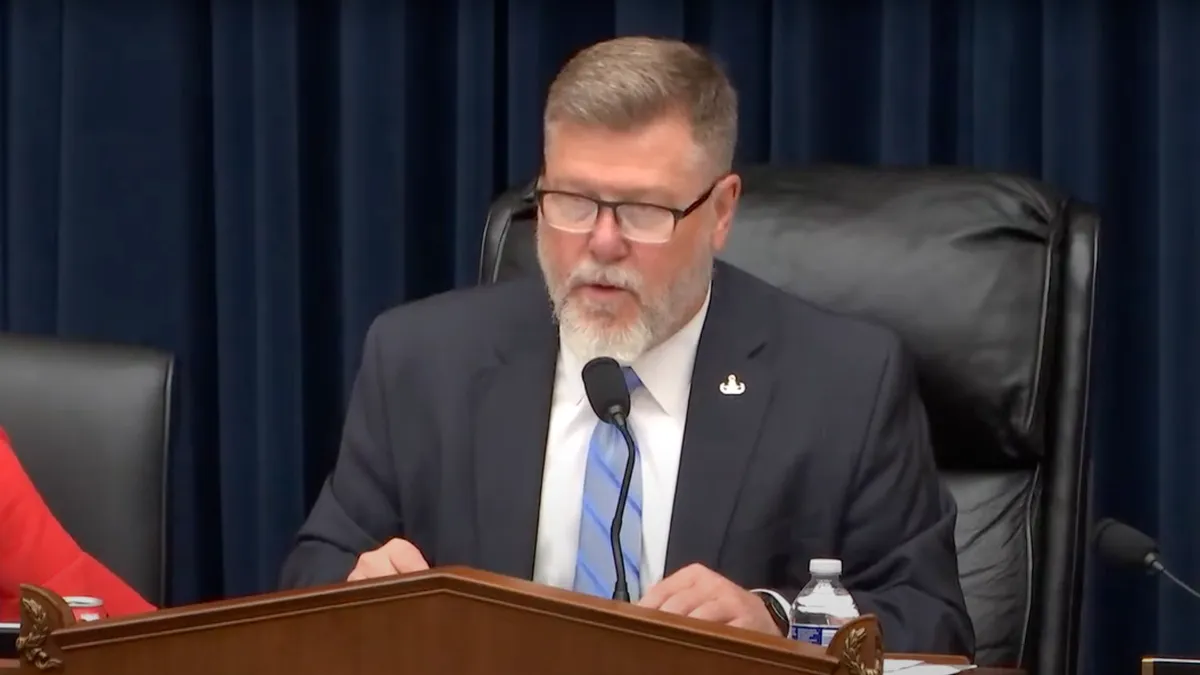How far should federal regulations go to make roads safer? That was the debate in a Wednesday hearing of the House Transportation and Infrastructure subcommittee on Highways and Transit.
“Every road user cares about safety,” said Congresswoman Eleanor Holmes Norton, D-D.C., Washington’s non-voting delegate.
She pointed to several Biden administration rules that she said will improve all road users’ safety. That includes the Federal Highway Administration’s updates to street design standards. The agency has also issued guidance to states on how to incorporate vulnerable road user safety assessments into their programs, and the bipartisan infrastructure law requires the National Highway Traffic Safety Adminstration to develop regulations that ensure cars have impaired driving prevention technology, Norton said.
However, the subcommittee’s chairman, U.S. Rep. Rick Crawford, R-Ark., said that the Biden administration’s “onerous regulatory agenda” created burdens across regions and industries. He noted that the FHWA’s 2021 policy memo encouraged states to prioritize non-motorized transportation modes and public transit as well as prioritize updating and repairing existing infrastructure over new highway construction. That memo was later superseded, in which the FHWA said it “recognizes and values the authority and role of the States in deciding how to prioritize the use of their Federal-aid highway dollars.”
Constraints and inconveniences may be necessary if road safety is to be a priority, said Beth Osborne, director at the advocacy organization Transportation for America. “The United States has the most dangerous roads of all the developed nations,” she said, pointing to rising pedestrian fatalities and states spending as much on roadway expansion as they do on repair. Osborne said that a preliminary analysis by her organization found that $33.5 billion of obligated IIJA funds have gone to highway expansion and $36.3 billion to highway resurfacing.
Osborne criticized the lack of oversight for federal dollars. “There is very little transparency into where funding is allocated and there is rarely a report on whether a project delivered any of the benefits that were promised,” she said. “States get the same amount of money if they produce great results or terrible results, whether they hit their targets or not.”
Even when the U.S. Department of Transportation and FHWA do impose regulations, “it often stifles innovation and stands in the way of efficiency, quality of life, public health and the economy,” Osborne said. She called out regulations that hamper cities’ ability to narrow lanes, reduce speed limits or add a crosswalk.
‘A maze of new and expanded regulations’
Tim Duit, president of Duit Construction Company and chair of the American Road and Transportation Builders Association, shared his industry’s perspective on the regulatory landscape. While applauding the Infrastructure Investment and Jobs Act, saying that it “provided a much-needed boost in investment” to modernize the nation’s transportation system, Duit said that “a maze of new and expanded regulations” creates uncertainty that impacts hiring, construction starts and where to purchase needed materials and equipment.
Duit gave some examples of new or changed regulations that he said “threaten to undermine economic benefits from the IIJA’s record investments.” These include the Build America, Buy America Act, regulations pertaining to the Disadvantaged Business Enterprise Program, National Environmental Policy Act regulations and expanded Occupational Safety and Health Administration rules.
Duit also noted, however, that the infrastructure law funded more than 75,000 new federal aid bridge and highway projects in its first two years and created almost 43,000 new construction jobs.
“While we may differ on the details of individual rules, I hope we can agree that consistent, reliable funding for infrastructure, and data-driven rules to guide the build out and the use of that infrastructure, is key to safety and the economy,” said U.S. Rep. Rick Larsen, D-Wash., ranking committee member.












